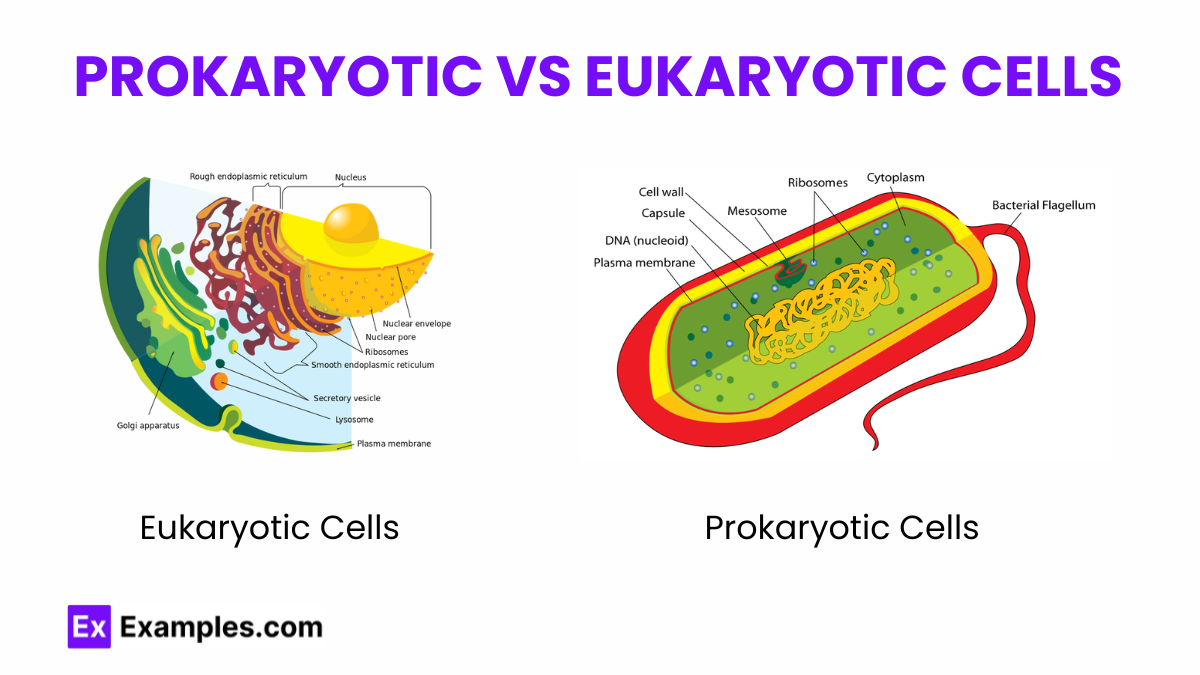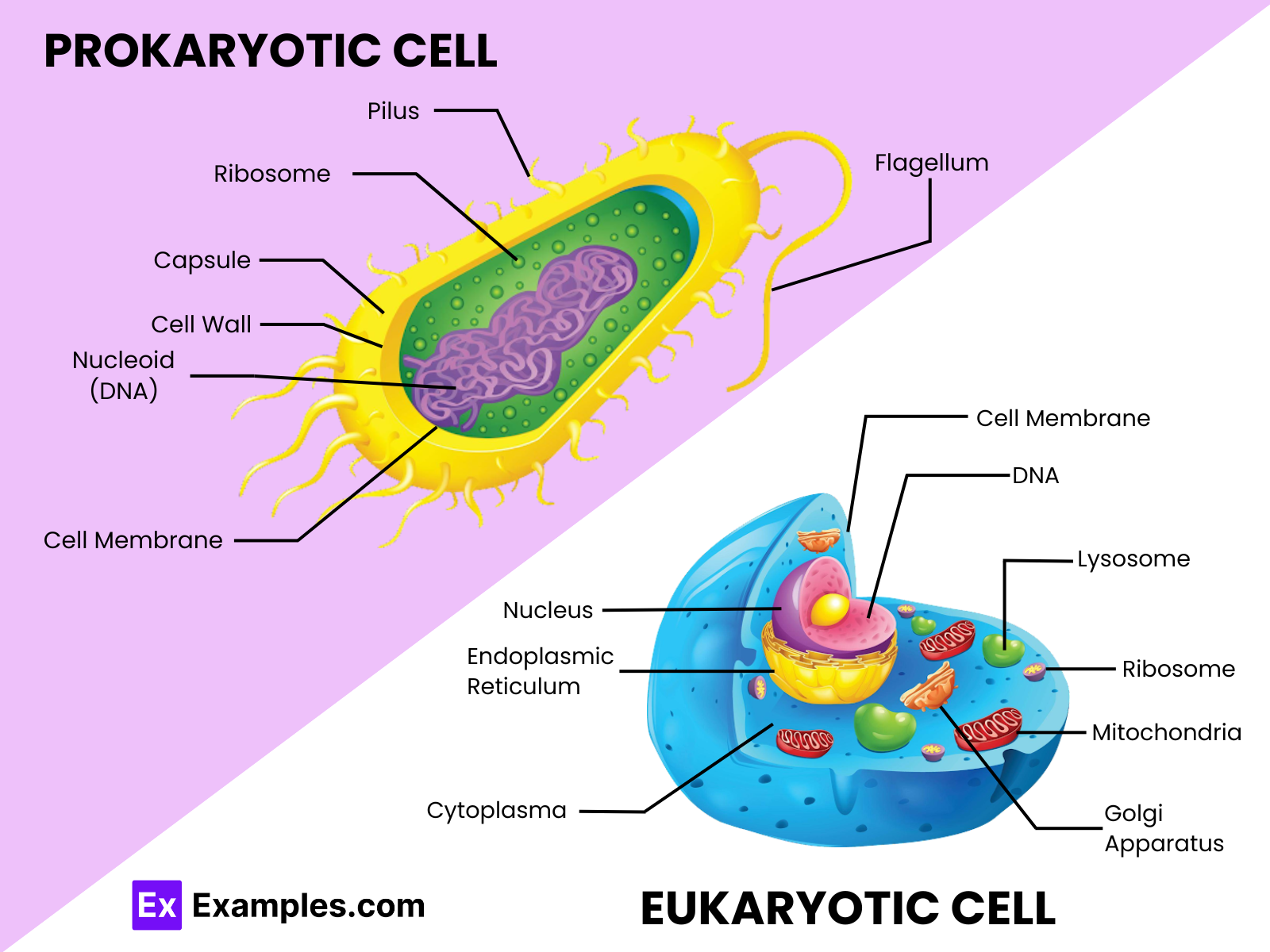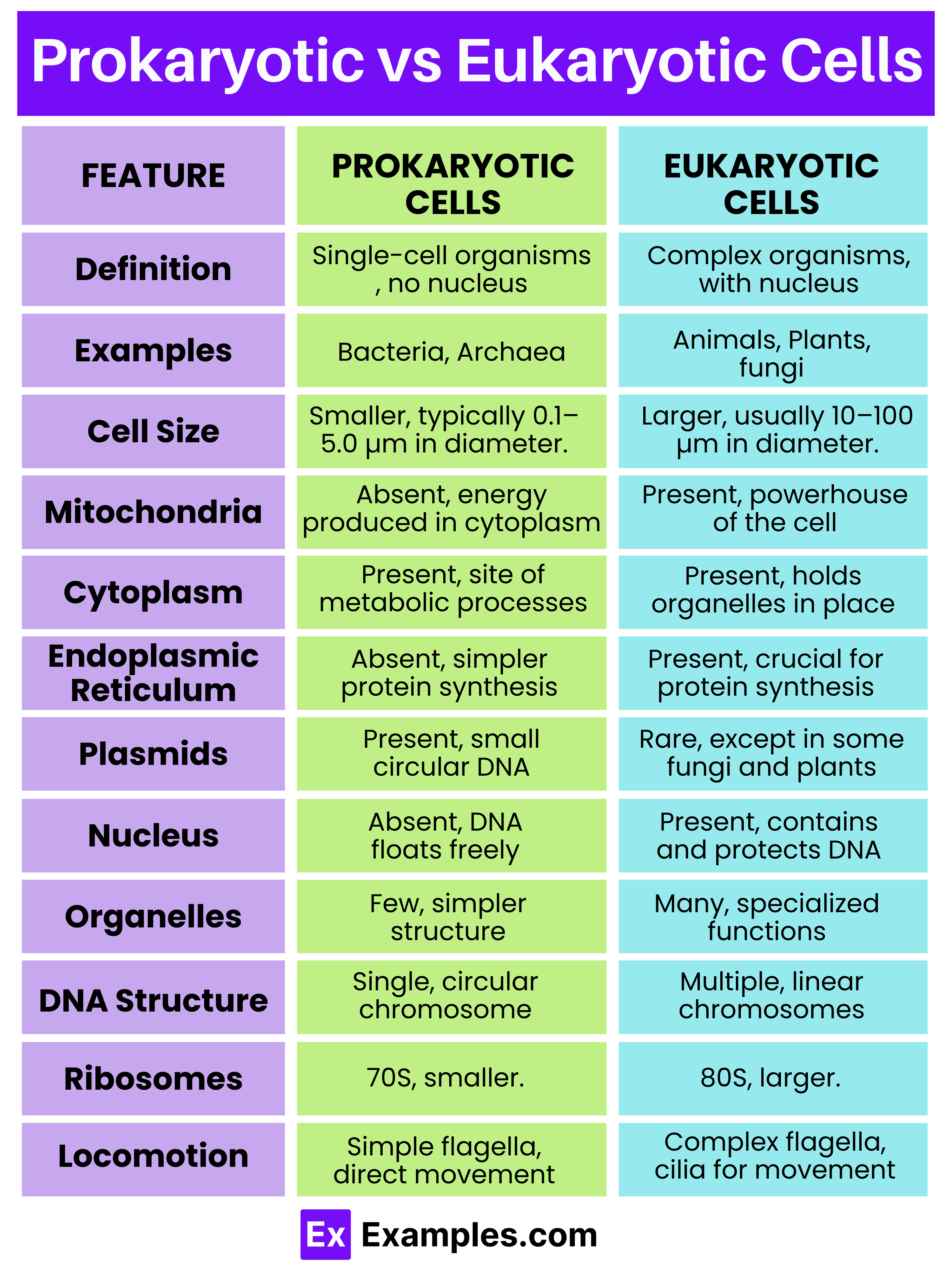Which of the following is a characteristic of prokaryotic cells?
Presence of a nucleus
Presence of membrane-bound organelles
Lack of a true nucleus
Presence of mitochondria

The concept of prokaryotic and eukaryotic cells underscores the fundamental structural and functional diversity within the biotic components of the environment, extending from microscopic bacteria to the giant Sequoias. Cells, the basic units of life, were first observed by Robert Hooke in 1665, likening them to the cells of a honeycomb. This analogy laid the groundwork for the later distinction made between prokaryotic and eukaryotic cells, a classification that emerged from advancements in scientific understanding during the 1950s, building upon Edouard Chatton’s initial concept in 1925. This distinction between cell types marks a significant milestone in our understanding of biological complexity, illustrating the anatomical variations that exist among living organisms at the microscopic level.

Distinctions between prokaryotic and eukaryotic cells reveals their unique cellular architectures and biological complexities. At the heart of this comparison lies the fact that prokaryotic cells, which form the basis of prokaryotes, maintain a simpler unicellular existence, housing their genetic blueprint directly in the cytoplasm. Eukaryotic cells, the foundational elements of eukaryotes, exhibit a higher level of complexity, often organizing into multicellular organisms. A striking difference in size underscores this complexity, with eukaryotic cells overshadowing their prokaryotic counterparts by a factor of 100 to 10,000 times, accommodating a vast array of internal structures and functions.
The storage and organization of genetic material further differentiate these cellular types. Eukaryotic cells safeguard their DNA within a defined nucleus, offering a protected environment for genetic information, which is organized into multiple, linear chromosomes. This contrasts sharply with prokaryotic cells, where DNA resides freely in the cytoplasm, typically in a singular, circular chromosome format. This fundamental variation not only reflects on their evolutionary divergence but also influences their genetic operations and cellular behaviors, making the understanding of these differences essential for grasping the diversity of life forms on Earth.

| Feature | Prokaryotic Cells | Eukaryotic Cells |
|---|---|---|
| Type of Cell | Simpler organisms, such as bacteria and archaea. | Complex organisms, including plants, animals, and fungi. |
| Mitochondria | Absent, with some biochemical processes occurring in the cell membrane instead. | Present, crucial for ATP production through cellular respiration. |
| Cytoplasm | Present; less structured due to the absence of compartmentalized organelles. | Present; highly structured, containing various membrane-bound organelles. |
| Endoplasmic Reticulum | Absent, functions performed by the cell membrane. | Present, consisting of smooth and rough types, crucial for protein and lipid synthesis. |
| Plasmids | Often present, providing additional genetic information and conferring advantages like antibiotic resistance. | Rare, mainly found in some fungi and protozoa, not typically part of the cellular structure in higher eukaryotes. |
| Nucleus | Absent; DNA is free-floating within the cell. | Present; DNA is contained within a membrane-bound nucleus. |
| Organelles | Lacks membrane-bound organelles. | Contains multiple membrane-bound organelles for specific cellular functions. |
| Size | Smaller, typically 0.1–5.0 µm in diameter. | Larger, usually 10–100 µm in diameter. |
| DNA Structure | Circular DNA, free in the cytoplasm. | Linear DNA, organized into chromosomes within the nucleus. |
| Ribosomes | 70S, smaller. | 80S, larger, associated with more complex protein synthesis. |
| Locomotion | Flagella are simpler, primarily for movement. | Flagella and cilia are complex, used for movement and other functions. |
| Cell Division | Binary fission, a simpler form of replication. | Mitosis for cell division and meiosis for sexual reproduction, facilitating genetic diversity. |
| Genetic Diversity | Limited, mainly through mutations and horizontal gene transfer. | Enhanced through sexual reproduction, leading to greater genetic variation. |
Despite the fundamental differences between prokaryotic and eukaryotic cells, they share several key similarities that underscore the unity of biological systems. These similarities include:
Humans are eukaryotic, as their cells contain a nucleus and membrane-bound organelles.
Animal cells are eukaryotic, characterized by a nucleus and complex cellular structures.
Fungi are eukaryotes, with cells that have a nucleus and other membrane-bound organelles.
Prokaryotic and eukaryotic cells both possess a plasma membrane, cytoplasm, genetic material (DNA), ribosomes for protein synthesis, and engage in essential metabolic pathways and cell division processes.
Text prompt
Add Tone
10 Examples of Public speaking
20 Examples of Gas lighting
Which of the following is a characteristic of prokaryotic cells?
Presence of a nucleus
Presence of membrane-bound organelles
Lack of a true nucleus
Presence of mitochondria
Eukaryotic cells are typically:
Smaller than prokaryotic cells
The same size as prokaryotic cells
Larger than prokaryotic cells
Without any organelles
Which type of cell contains ribosomes?
Only prokaryotic cells
Only eukaryotic cells
Both prokaryotic and eukaryotic cells
Neither prokaryotic nor eukaryotic cells
Which of the following structures is found in eukaryotic cells but not in prokaryotic cells?
Plasma membrane
Ribosome
Mitochondrion
DNA
Prokaryotic cells divide by:
Mitosis
Meiosis
Binary fission
Budding
Which domain do eukaryotic cells belong to?
Bacteria
Bacteria
Eukarya
Prokarya
What is the main genetic material in prokaryotic cells?
Linear chromosomes
Circular DNA
Mitochondrial DNA
Plasmids only
The presence of a cell wall is a characteristic of:
All eukaryotic cells
All prokaryotic cells
Some eukaryotic cells and all prokaryotic cells
Neither eukaryotic nor prokaryotic cells
Which of the following is a similarity between prokaryotic and eukaryotic cells?
Both have a nucleus
Both have membrane-bound organelles
Both have DNA as their genetic material
Both are multicellular
Which organelle is involved in energy production in eukaryotic cells?
Ribosome
Mitochondrion
Nucleus
Golgi apparatus
Before you leave, take our quick quiz to enhance your learning!

